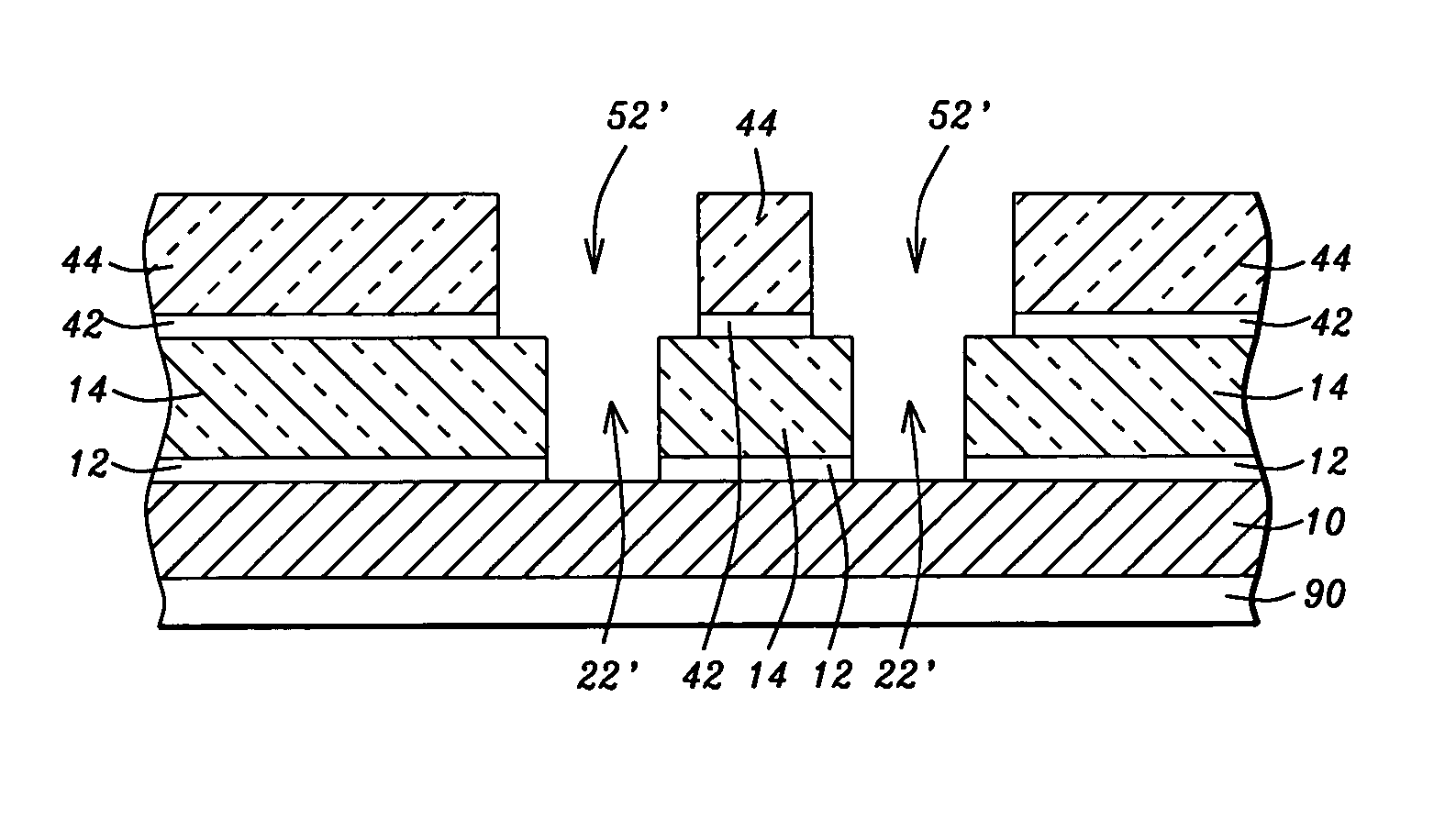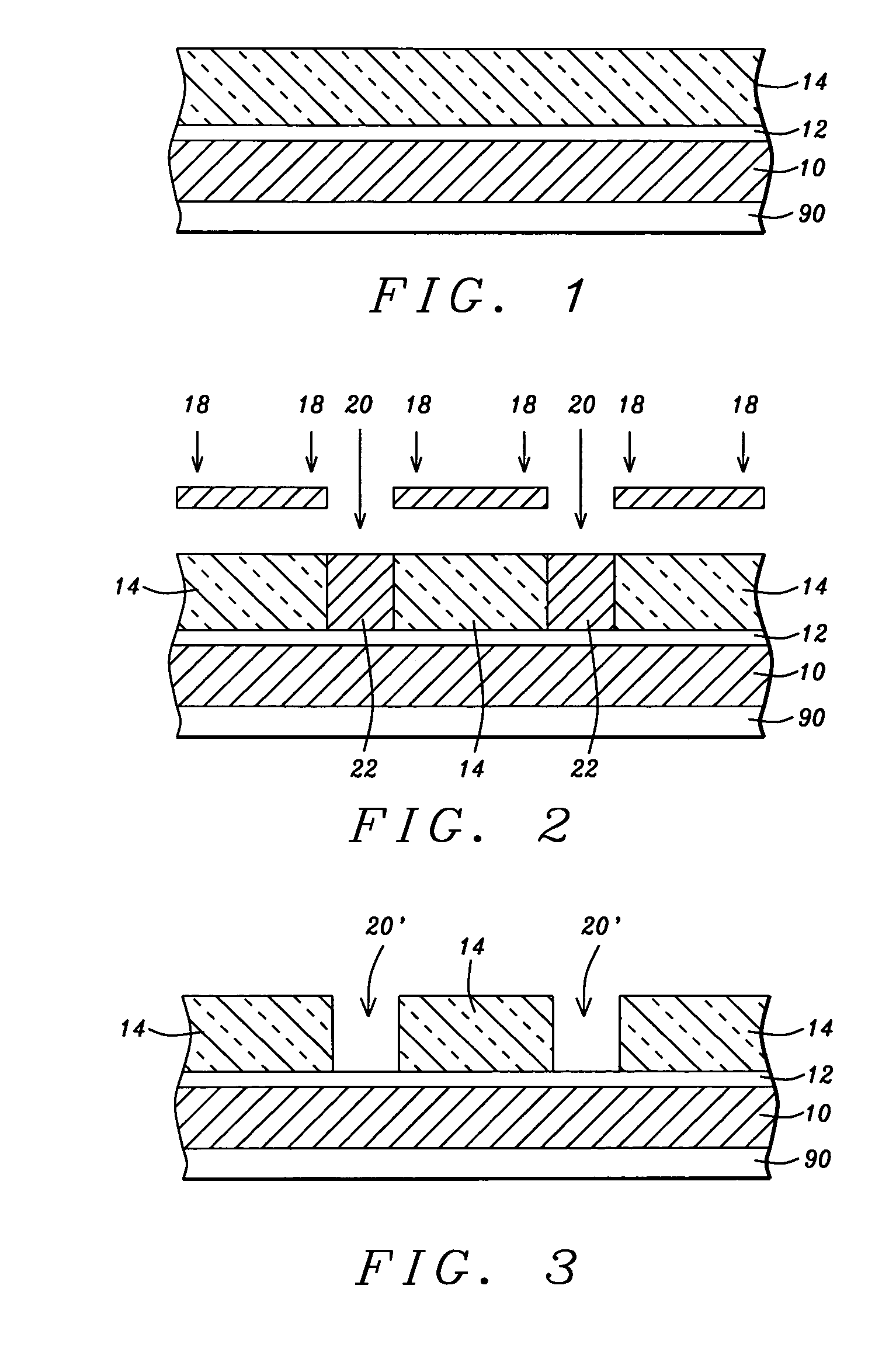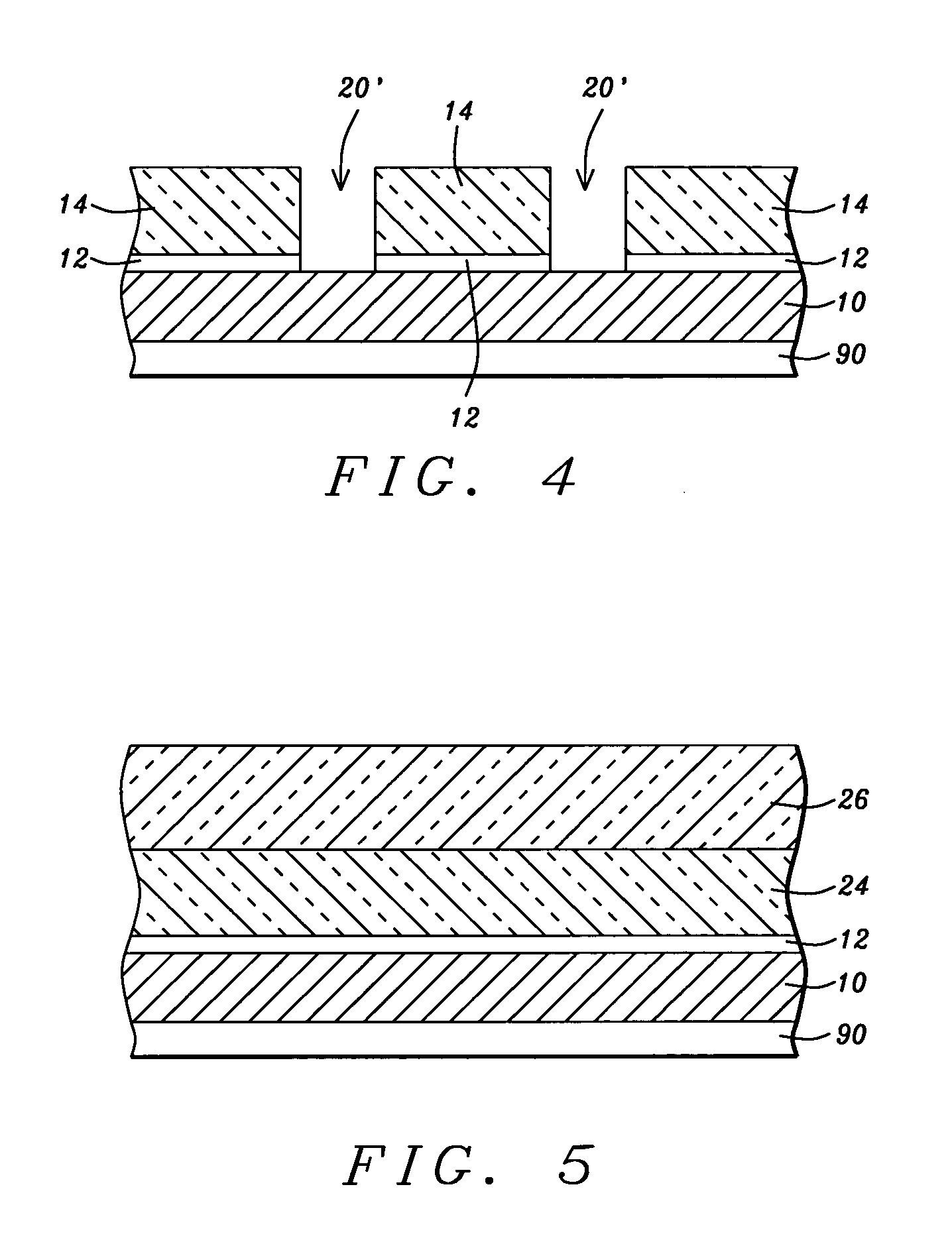Self-patterning of photo-active dielectric materials for interconnect isolation
a dielectric material and self-patterning technology, applied in the manufacturing of solid-state devices, electric devices, semiconductor/solid-state devices, etc., can solve the problems of high increased cost of creating conductive interconnect patterns, and potential contamination of low-k dielectric materials
- Summary
- Abstract
- Description
- Claims
- Application Information
AI Technical Summary
Benefits of technology
Problems solved by technology
Method used
Image
Examples
first embodiment
[0059] As a final step under the invention, the layer 12 of ARC is removed from the bottom surface of openings 20′, the result of which is shown in the cross section of FIG. 4. The layer 10 of metal, preferably comprising copper, is now exposed, enabling the creation of single damascene interconnects by filling openings 20′ with a conductive material, such as copper, which will be in direct contact with the layer 10 of for instance copper.
[0060] As an example of layer 12 can be cited a layer of Bottom Anti Reflective Coating (BARC), comprising either SiON or organic BARC, which can be removed from opening 20′ with a recipe comprising O2 at a flow rate between 10 and 100 sccm, N2 at a flow rate between 10 and 100 sccm, applied for a time period between about 30 and 60 seconds.
second embodiment
[0061] the invention will now be explained using FIGS. 5 through 10 for this purpose.
[0062] The cross section shown in FIG. 5 will be recognized as the cross section of FIG. 1 with the addition of a second layer 26 of PAD that has been deposited over the first layer 24 of PAD. The first layer 24 of PAD is similar to the layer 14 of PAD that has been shown in the cross section of FIG. 1.
[0063] Comments that have been made with respect to layers 10, 12 and 14 of FIG. 1 equally apply to layers 10, 12, 24 (a first layer of PAD) and 26 (a second layer of PAD) shown in cross section in FIG. 5 and are enclosed at this time by reference.
[0064] It must further be pointed out that layer 24, the first PAD layer, and layer 26, the second PAD layer, preferably comprise different types of PAD materials, as these PAD materials have previously been defined, and are exposed and subsequently developed using different types of lithographic exposures, thus allowing for the creation of openings having...
third embodiment
[0077] the invention starts with the structure that has been shown in the cross section of FIG. 2. This cross section is again shown in the cross section of FIG. 11, the exposure mask 16 and the source 18 / 20 of light energy, which are shown in FIG. 2, are omitted from the cross section shown in FIG. 11. The steps that are required to create the cross section that is shown in FIG. 1 therefore are assumed to precede the cross section shown in FIG. 11.
[0078] It must be noted in FIG. 11 that the layer 12 of ARC remains in place underneath the exposed regions 22 of the first layer 14 of PAD.
[0079]FIG. 12 shows a cross section after a second layer 42 of ARC has been deposited, for the conventional reasons as highlighted previously for the deposition of a layer of ARC, over which a second layer 44 of PAD has been deposited.
[0080] The second layer 44, as shown in the cross section of FIG. 13, is now exposed using exposure mask 46. The openings contained in exposure mask 46 are aligned wit...
PUM
 Login to View More
Login to View More Abstract
Description
Claims
Application Information
 Login to View More
Login to View More - R&D
- Intellectual Property
- Life Sciences
- Materials
- Tech Scout
- Unparalleled Data Quality
- Higher Quality Content
- 60% Fewer Hallucinations
Browse by: Latest US Patents, China's latest patents, Technical Efficacy Thesaurus, Application Domain, Technology Topic, Popular Technical Reports.
© 2025 PatSnap. All rights reserved.Legal|Privacy policy|Modern Slavery Act Transparency Statement|Sitemap|About US| Contact US: help@patsnap.com



